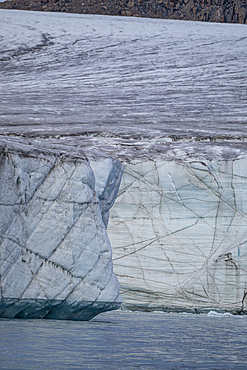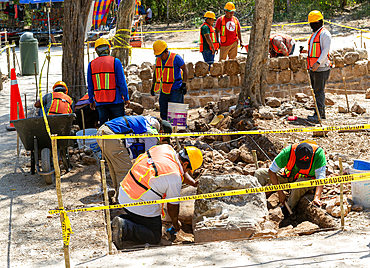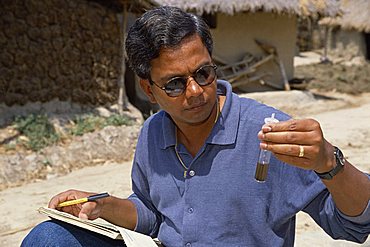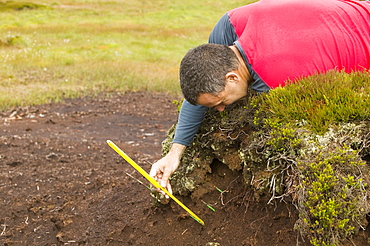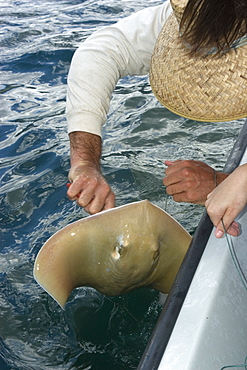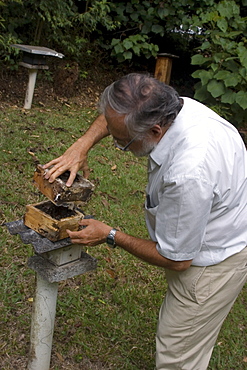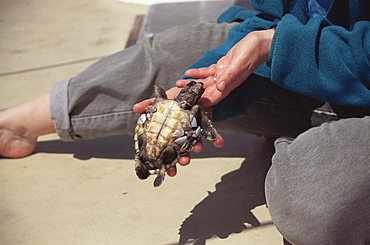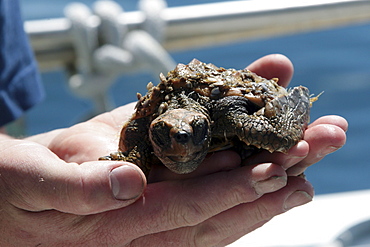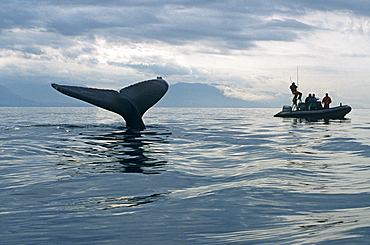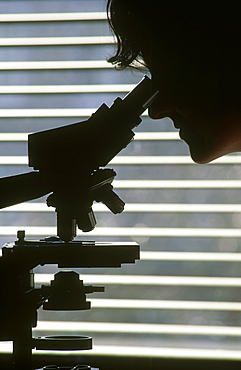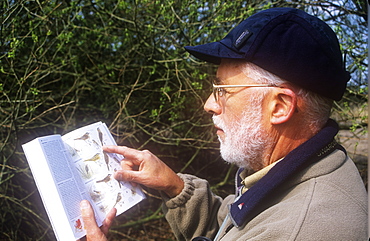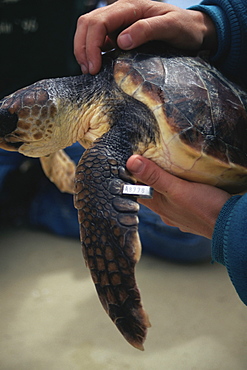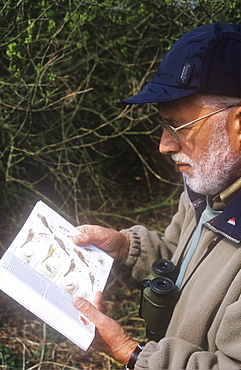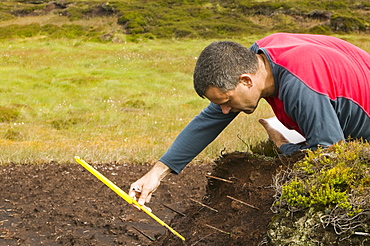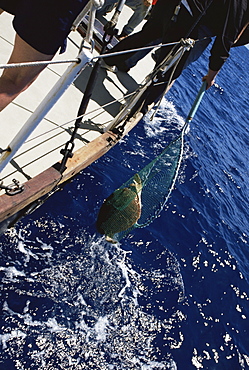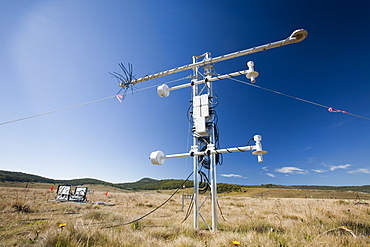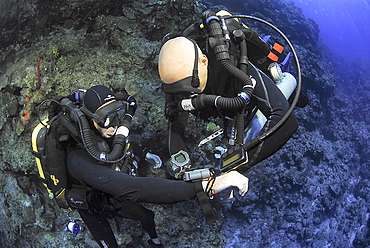Results
21 results found
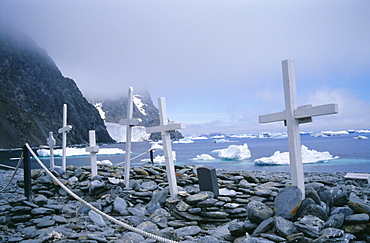
Grave site with memorials to whalers and scientists, Laurie Island, South Orkney Islands, Antarctica, Polar Regions
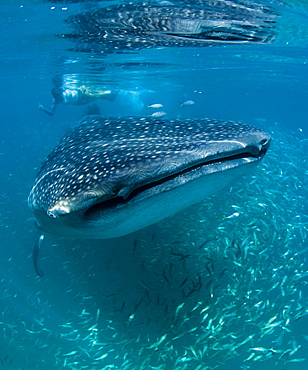
Scientist and whale shark (Rhincodon typus) feeding at the surface on zooplankton, mouth open, known as ram feeding, Yum Balam Marine Protected Area, Quintana Roo, Mexico, North America
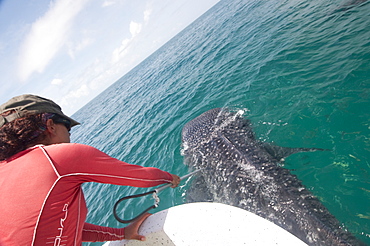
Biologist taking skin sample from a whale shark to determine what plankton types the animal has been feeding on, Yum Balam Marine Protected Area, Quintana Roo, Mexico, North America
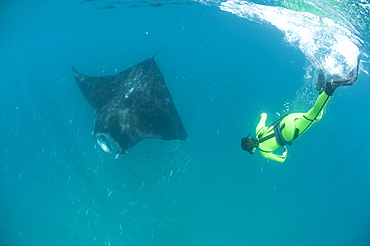
Scientist free diving to make a photo identification of an individual manta ray (Manta birostris), Yum Balam Marine Protected Area, Quintana Roo, Mexico, North America
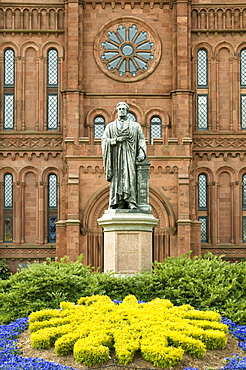
Entrance to the Smithsonian Castle with statue of Joseph Henry outside on the Mall in Washington, D.C., United States of America, North America
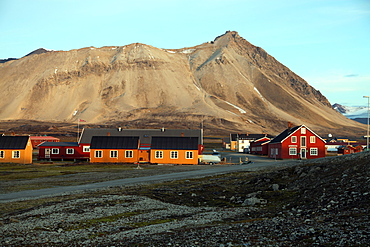
Ny Alesund, the most northerly settlement in the world, a base for international scientists, Svalbard, Norway, Scandinavia, Europe
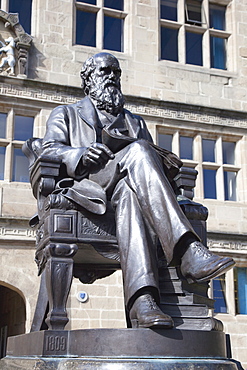
Statue of Charles Darwin outside Public Library, Shrewsbury, Shropshire, England, United Kingdom, Europe
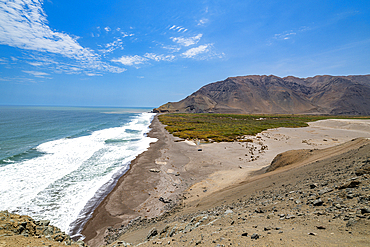
Chinchorro Mummies site, UNESCO World Heritage Site, Camarones Valley, northern Atacama desert, Chile, South America
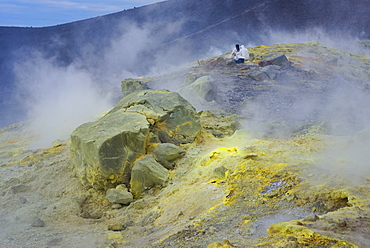
Geologists taking minerals samples on Gran Cratere (The Great Crater), Vulcano Island, Aeolian Islands, UNESCO World Heritage Site, north of Sicily, Italy, Mediterranean, Europe
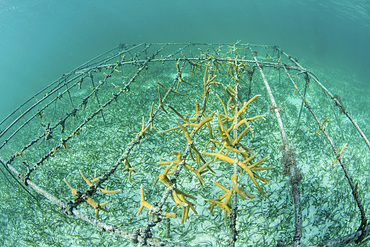
Fast-growing corals (Acropora sp.) are being grown by scientists in the Caribbean Sea. Once they reach a certain size they will be planted on a reef that has been previously damaged.
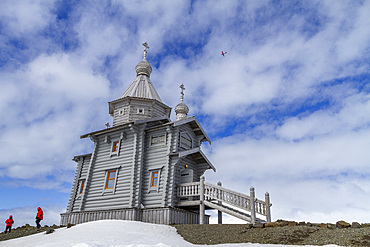
Views of the Trinity Church at Belingshausen Russian Research Station, Antarctica, Southern Ocean, Polar Regions

Photograph taken in the 1960s of a billboard showing the four modernizations, represented by farmer, scientist, industrial worker holding complete works of Mao and soldier, Shaoshan, Hunan, China, Asia
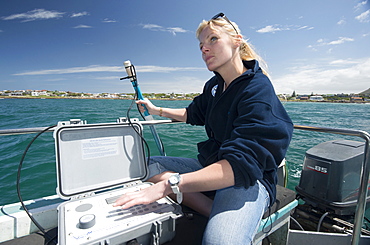
Scientist uses hydrophone to track tagged great white shark (Carcharodon carcharias) behaviour in real time, Gaansbaai, Western Cape, South Africa, Africa

Shark scientist monitors live satellite tagged great white shark (Carcharodon carcharias) on computer, Western Cape, South Africa, Africa
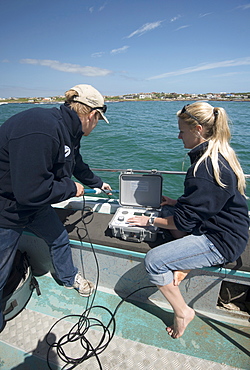
Scientists use hydrophone to track tagged great white shark (Carcharodon carcharias) behaviour, Gaansbai, Western Cape, South Africa, Africa
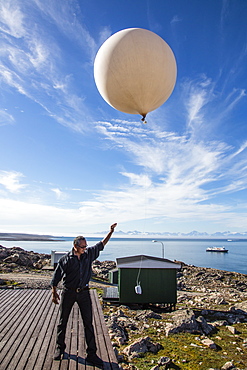
Inuit village, weather balloon launch, Ittoqqortoormiit, Scoresbysund, Northeast Greenland, Polar Regions
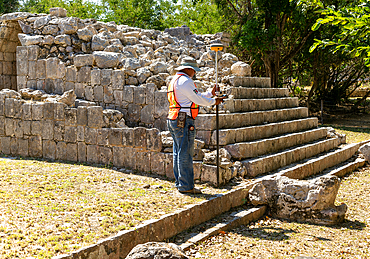
Surveyor at work, Temple of Panels (Templo de los Tableros Esculpidos), Mayan ruins, Chichen Itza, UNESCO World Heritage Site, Yucatan, Mexico, North America

Tomb of Galileo, Santa Croce church, Florence (Firenze), UNESCO World Heritage Site, Tuscany, Italy, Europe
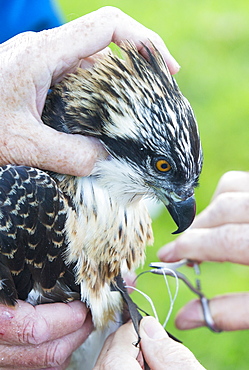
On Friday 11th July 2014, the Young Ospreys that nest on Bassenthwaite in the Lake District National Park, Cumbria, UK, are ringed and fitted with a satelite tracker. they are ringed by Pete Davis, a licensed bird ringer, and the satelite tracker is fitred by Roy Dennis. Roy is theonly person in the UK, licensed to fit satelite trackers to birds of prey. The tracing is part of the Bassenthwaite Osprey project, to see whereabouts in Africa the young migrate to, before returning hopefully to the UK to nest.Ospreys recolonized the Lake district in 2001, after an absence ovf over 150 years. In the last fourteen years of breeding over half a million people have visited the project to view these spectacular fish eating birds.
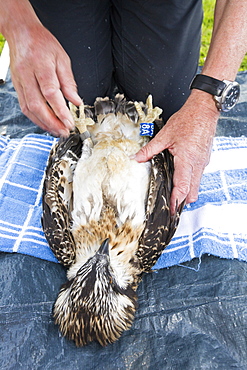
On Friday 11th July 2014, the Young Ospreys that nest on Bassenthwaite in the Lake District National Park, Cumbria, UK, are ringed and fitted with a satelite tracker. they are ringed by Pete Davis, a licensed bird ringer, and the satelite tracker is fitred by Roy Dennis. Roy is theonly person in the UK, licensed to fit satelite trackers to birds of prey. The tracing is part of the Bassenthwaite Osprey project, to see whereabouts in Africa the young migrate to, before returning hopefully to the UK to nest.Ospreys recolonized the Lake district in 2001, after an absence ovf over 150 years. In the last fourteen years of breeding over half a million people have visited the project to view these spectacular fish eating birds.
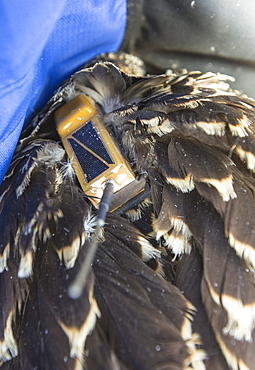
On Friday 11th July 2014, the Young Ospreys that nest on Bassenthwaite in the Lake District National Park, Cumbria, UK, are ringed and fitted with a satelite tracker. they are ringed by Pete Davis, a licensed bird ringer, and the satelite tracker is fitred by Roy Dennis. Roy is theonly person in the UK, licensed to fit satelite trackers to birds of prey. The tracing is part of the Bassenthwaite Osprey project, to see whereabouts in Africa the young migrate to, before returning hopefully to the UK to nest.Ospreys recolonized the Lake district in 2001, after an absence ovf over 150 years. In the last fourteen years of breeding over half a million people have visited the project to view these spectacular fish eating birds.
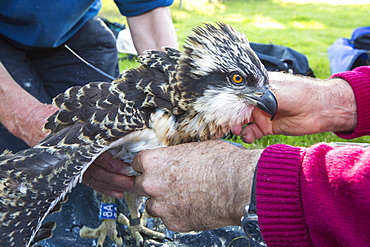
On Friday 11th July 2014, the Young Ospreys that nest on Bassenthwaite in the Lake District National Park, Cumbria, UK, are ringed and fitted with a satelite tracker. they are ringed by Pete Davis, a licensed bird ringer, and the satelite tracker is fitred by Roy Dennis. Roy is theonly person in the UK, licensed to fit satelite trackers to birds of prey. The tracing is part of the Bassenthwaite Osprey project, to see whereabouts in Africa the young migrate to, before returning hopefully to the UK to nest.Ospreys recolonized the Lake district in 2001, after an absence ovf over 150 years. In the last fourteen years of breeding over half a million people have visited the project to view these spectacular fish eating birds.
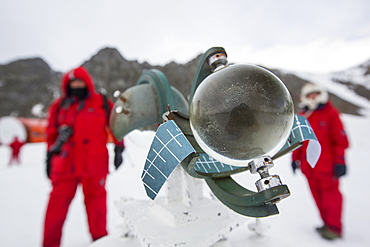
A Campbell Stokes Sunshine Recorder, which measures hours of sunlight at Base Orcadas, which is an Argentine scientific station in Antarctica, and the oldest of the stations in Antarctica still in operation. It is located on Laurie Island, one of the South Orkney Islands, just off the Antarctic Peninsular. The Antarctic Peninsular is one of the fastest warming places on the planet.
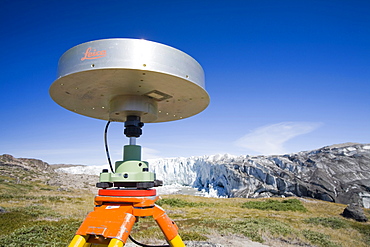
PHD scientist Ian Bartholomew's GPS equipment measuring the speed of the Russell Glacier near Kangerlussuaq Greenland, Polar Regions
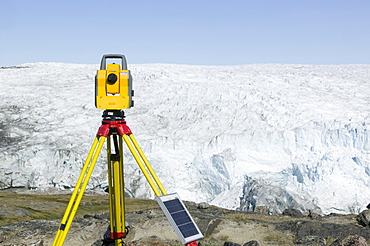
PHD scientist Ian Bartholomew's theodolite measuring the speed of the Russell Glacier near Kangerlussuaq, Greenland, Polar Regions
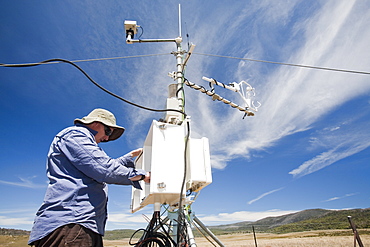
A scientific experiment by scientists from Sydney University, in the Snowy mountains, New South Wales, Australia, Pacific
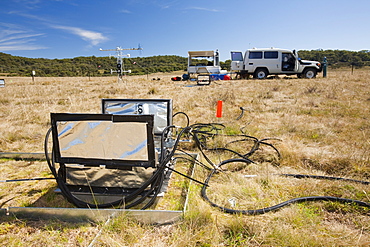
A scientific experiment by scientists from Sydney University, in the Snowy Mountains, New South Wales, Australia, Pacific
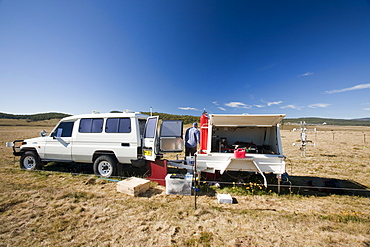
A scientific experiment by scientists from Sydney University, in the Snowy Mountains, New South Wales, Australia, Pacific
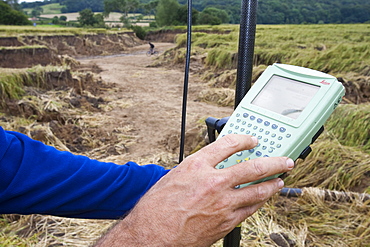
A differential GPS being used in real time kinematic survey, to survey the extent of the Durham canyon flooding feature, County Durham, England, United Kingdom, Europe
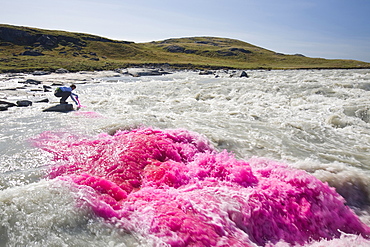
PHD scientist Ian Bartholomew using dye tracing techniques as part of a study to measure the speed of the Russell Glacier near Kangerlussuaq, Greenland, Polar Regions

PhD scientist Ian Bartholomew taking measurements as part of a study to measure the speed of the Russell Glacier near Kangerlussuaq, Greenland, Polar Regions
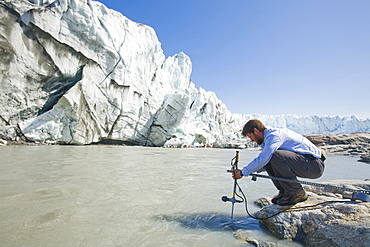
PHD scientist Ian Bartholomew taking measurements as part of a study to measure the speed of the Russell Glacier near Kangerlussuaq, Greenland, Polar Regions
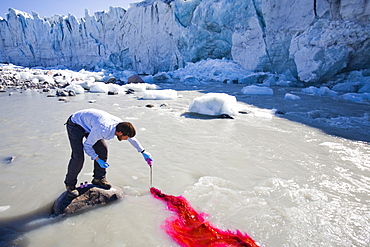
PHD scientist Ian Bartholomew using dye tracing techniques as part of a study to measure the speed of the Russell Glacier near Kangerlussuaq, Greenland, Polar Regions
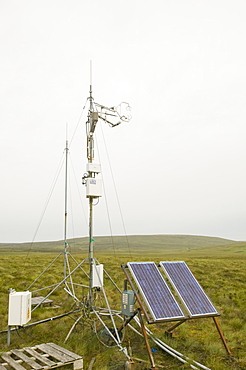
Scientific instruments to measure the carbon balance from peat bogs which is changing due to climate change in the north Pennines at Moorhouse, Cumbria, England, United Kingdom, Europe
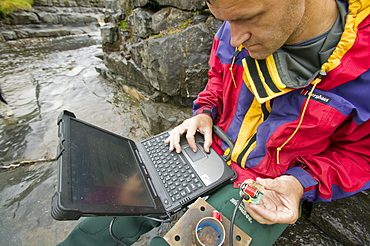
A scientist studying sediment load in a stream at Moorhouse in the north Pennines, Cumbria, England, United Kingdom, Europe
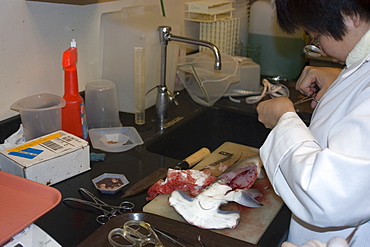
Graduate student dissects hammerhead shark pup (Sphyrna lewini), Hawaii Institute of Marine Biology, Kaneohe, Oahu, Hawaii, United States of America, Pacific
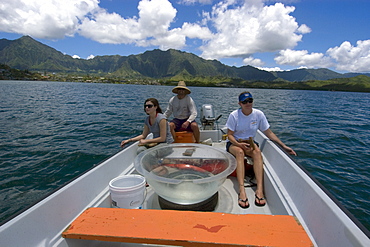
Scientists and graduate student collecting hammerhead shark pups for research, Hawaii Institute of Marine Biology, Kaneohe, Oahu, Hawaii, United States of America, Pacific

Research scientist Lori Davis holds hammerhead shark pup (Sphyrna lewini), Hawaii Institute of Marine Biology, Kaneohe, Oahu, Hawaii, United States of America, Pacific
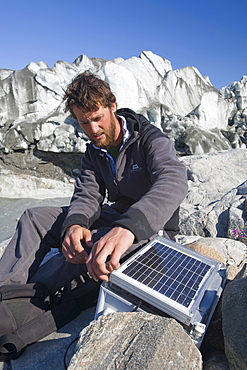
PHD scientist Ian Bartholomew taking measurements as part of a study to measure the speed of the Russell Glacier near Kangerlussuaq, Greenland, Polar Regions
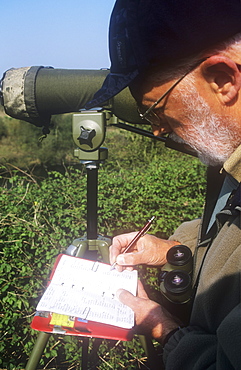
Tony Cooper a volunteer bird surveyor for the British Trust for Ornithology. Survey work undertaken over many years in the UK of birds has revealed birds reacting to climate change by changing range or starting to breed earlier.

Water temperatures being taken from the meltwater river at the snout of the Russell Glacier near Kangerlussuaq in Greenland, Polar Regions
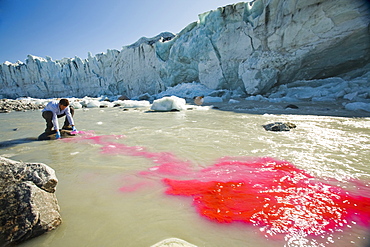
PHD scientist Ian Bartholomew using dye tracing techniques as part of a study to measure the speed of the Russell Glacier near Kangerlussuaq, Greenland, Polar Regions
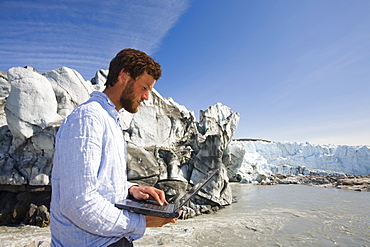
PhD scientist Ian Bartholomew taking measurements as part of a study to measure the speed of the Russell Glacier near Kangerlussuaq, Greenland, Polar Regions
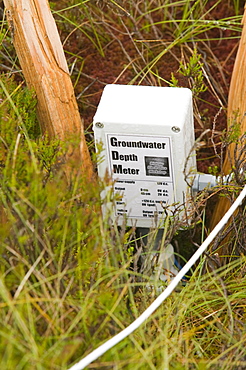
Scientific instruments to measure the carbon balance from peat bogs which is changing due to climate change in the north Pennines at Moorhouse, Cumbria, England, United Kingdom, Europe
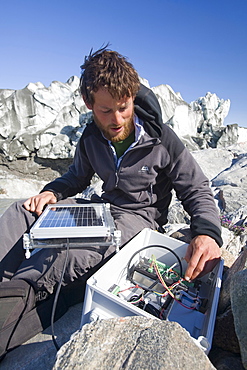
PHD scientist Ian Bartholomew taking measurements as part of a study to measure the speed of the Russell Glacier near Kangerlussuaq, Greenland, Polar Regions
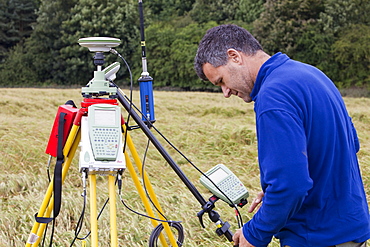
A differential GPS being used in real time kinematic survey, to survey the extent of the Durham canyon flooding feature, County Durham, England, United Kingdom, Europe
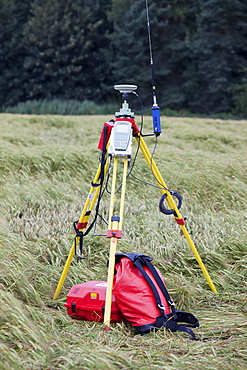
A differential GPS being used in real time kinematic survey, to survey the extent of the Durham canyon flooding feature, County Durham, England, United Kingdom, Europe
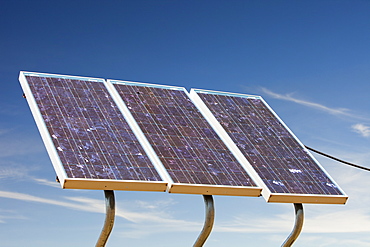
Solar panels used to generate electricity to power scientific equipment as part of a research project by scientists from Sydney University, in the Snowy Mountains, New South Wales, Australia, Pacific
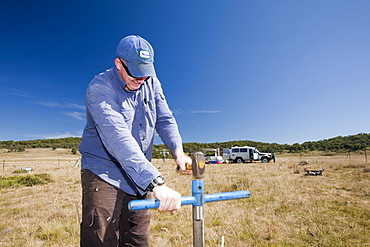
Robert Simpson takes soil samples to measure the level of methanotropic bacteria during an experiment by scientists from Sydney University, in the Snowy mountains, New South Wales, Australia Pacific

A differential GPS being used in real time kinematic survey, to survey the extent of the Durham canyon flooding feature, County Durham, England, United Kingdom, Europe
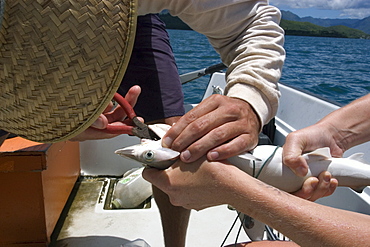
Research scientist taking hook off hammerhead shark pup (Sphyrna lewini), Hawaii Institute of Marine Biology, Kaneohe, Oahu, Hawaii, United States of America, Pacific
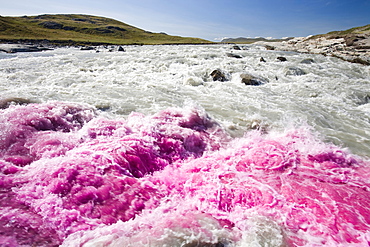
PHD scientist Ian Bartholomew using dye tracing techniques as part of a study to measure the speed of the Russell Glacier near Kangerlussuaq, Greenland, Polar Regions
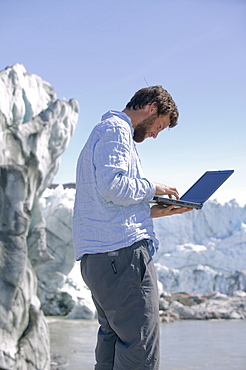
PhD scientist Ian Bartholomew taking measurements as part of a study to measure the speed of the Russell Glacier near Kangerlussuaq, Greenland, Polar Regions

The National Geographic Endeavour anchored at the old Norwegian whaling station at Whaler's Cove, Deception Island
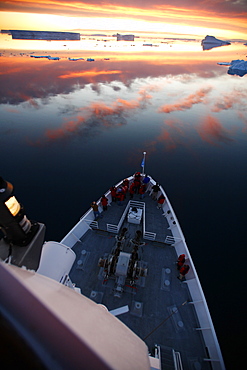
A view from the crow's nest of tNational Geographic Endeavourat sunset in the Weddell Sea, Antarctica.
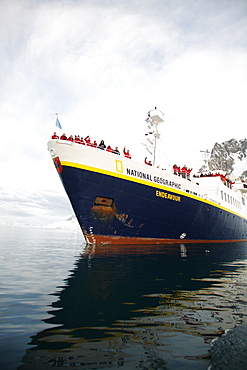
The National Geographic Endeavour pushing through brash ice and small icebergs in the Lemaire Channel near the Antarctic Peninsula.
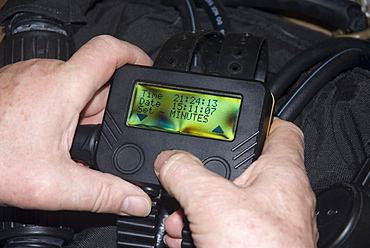
Technical Divers setting up rebreather computer for technical diving equipment, Divetech, Grand Cayman, Cayman Islands, Caribbean
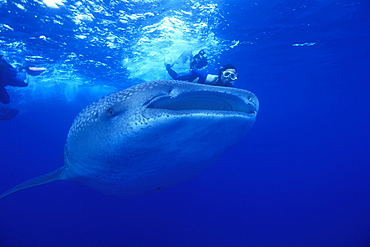
Whale shark. Growing over 17m in length, despite it is th largest fish of the world, scientists still do not know a lot about the Whale Shark, such as where they migrate to, why divers don't see the free swimming babies, etc. Here, a bunch of divers may be a bit too close to the 8m long shark. By regulations in Ningaloo, swimmers have to be 3 meter from the whale shark. Ningaloo Reef, Western Australia

Technical Divers using Trimix, Rebreathers and technical diving equipment, Divetech, Grand Cayman, Cayman Islands, Caribbean
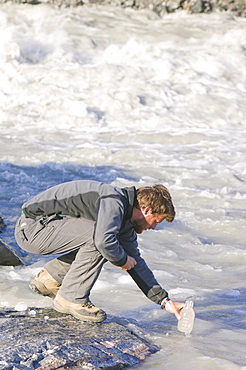
PHD scientist Ian Bartholomew using dye tracing techniques as part of a study to measure the speed of the Russell Glacier near Kangerlussuaq in Greenland, Polar Regions

PHD scientist Ian Bartholomew using dye tracing techniques as part of a study to measure the speed of the Russell Glacier near Kangerlussuaq, Greenland, Polar Regions

Technical Divers setting up rebreather computer for technical diving equipment, Divetech, Grand Cayman, Cayman Islands, Caribbean
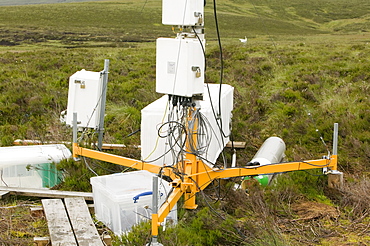
Scientific instruments to measure the carbon balance from peat bogs which is changing due to climate change in the north Pennines at Moorhouse, Cumbria, England, United Kingdom, Europe
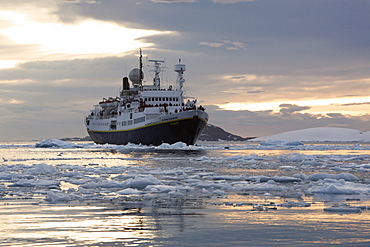
The National Geographic Endeavour pushing through brash ice and small icebergs in the Lemaire Channel near the Antarctic Peninsula.
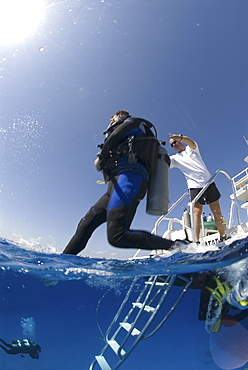
Technical Divers using Trimix, entering water from dive boat, Divetech, Grand Cayman, Cayman Islands, Caribbean

Research boat. "Forever Changes" is the research boat of the Wildlife Trusts, engaged here in basking shark work. Hebrides, Scotland
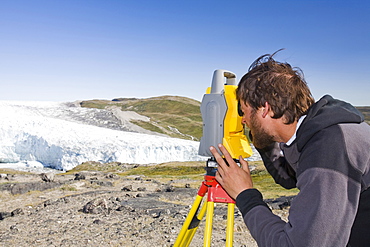
PHD scientist Ian Bartholomew using a theodolite to measure the speed of the Russell Glacier near Kangerlussuaq, Greenland, Polar Regions
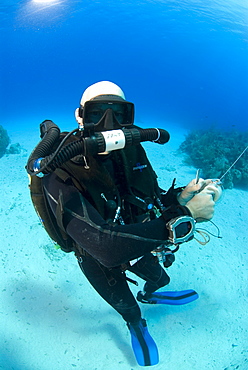
Technical Divers using Trimix, Rebreathers and technical diving equipment, Divetech, Grand Cayman, Cayman Islands, Caribbean
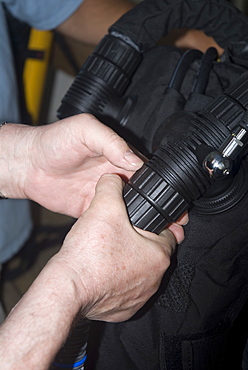
Technical Divers setting up rebreather computer for technical diving equipment, Divetech, Grand Cayman, Cayman Islands, Caribbean
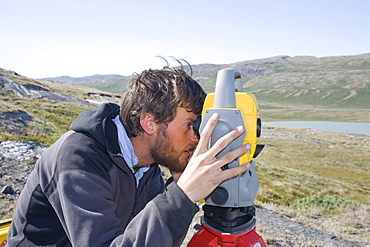
PHD scientist Ian Bartholomew using a theodolite to measure the speed of the Russell Glacier near Kangerlussuaq, Greenland, Polar Regions
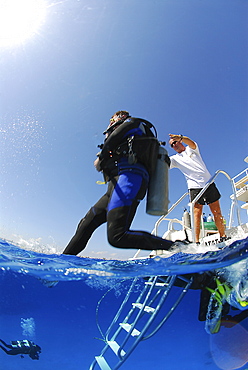
Cayman Islands Technical Diver entering water with assistance, Divetech, Grand Cayman Island, Cayman Islands, Caribbean
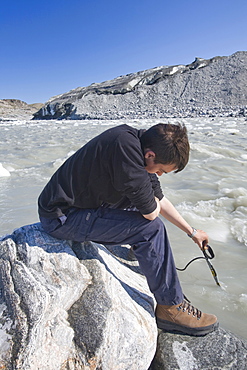
PHD scientist Ian Bartholomew taking measurements as part of a study to measure the speed of the Russell Glacier near Kangerlussuaq, Greenland, Polar Regions
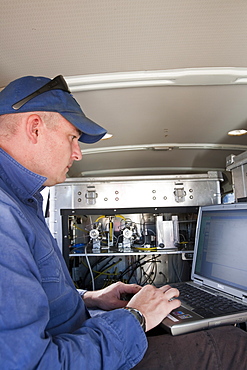
Robert Simpson conducts a scientific experiment by Sydney University, Australia, in the Snowy mountains, New South Wales, Australia, Pacific
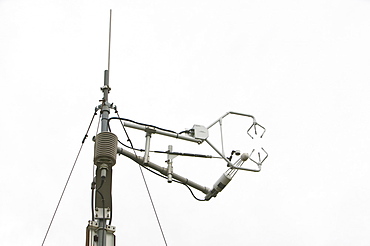
Scientific instruments to measure the carbon balance from peat bogs which is changing due to climate change in the north Pennines at Moorhouse, Cumbria, England, United Kingdom, Europe
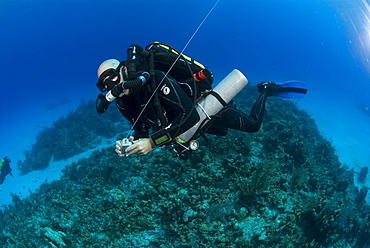
Technical Divers using Trimix, Rebreathers and technical diving equipment, Divetech, Grand Cayman, Cayman Islands, Caribbean

Solar panels used to generate electricity to power scientific equipment as part of a research project by scientists from Sydney University, in the Snowy Mountains, New South Wales, Australia, Pacific

Solar panels used to generate electricity to power scientific equipment as part of a research project by scientists from Sydney University, in the Snowy Mountains, New South Wales, Australia, Pacific
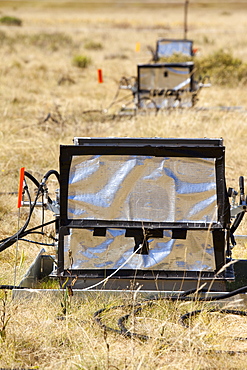
A scientific experiment by scientists from Sydney University, in the Snowy Mountains, New South Wales, Australia, Pacific
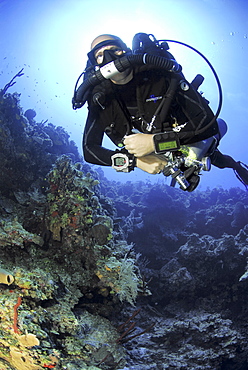
Technical Divers using Trimix, Rebreathers and technical diving equipment, Divetech, Grand Cayman, Cayman Islands, Caribbean
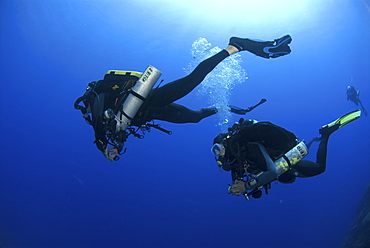
Technical Divers using Trimix, Rebreathers and technical diving equipment, Divetech, Grand Cayman, Cayman Islands, Caribbean
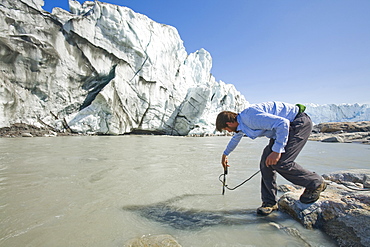
PHD scientist Ian Bartholomew taking measurements as part of a study to measure the speed of the Russell Glacier near Kangerlussuaq, Greenland, Polar Regions
